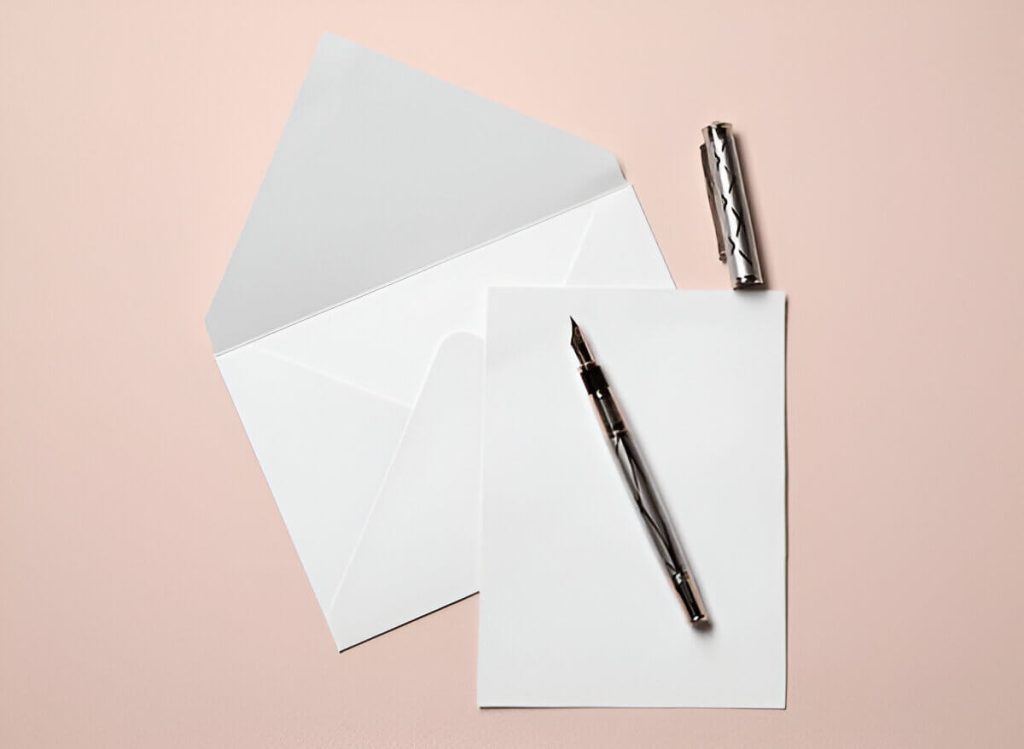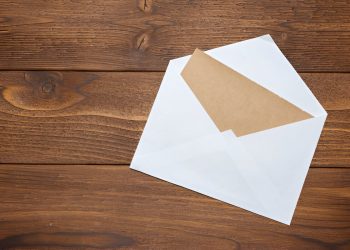In a digital age, correctly addressing an envelope remains vital for ensuring mail reaches its destination. Whether for personal or business communications, mastering envelope addressing is key for professionalism and effective delivery. This guide offers step-by-step instructions on properly addressing envelopes, from handling international mail to avoiding common mistakes, enhancing your correspondence with accuracy and style.
The Importance of Properly Addressing Envelopes
Addressing an envelope might seem like a simple task, but its importance cannot be overstated. Ensuring that your correspondence reaches its intended recipient in a timely and efficient manner largely depends on how accurately you address the envelope. Understanding how to address an envelope correctly is essential for both personal and professional communication.
The first step in addressing an envelope is to follow a standard format, which typically includes the recipient’s name, street address, city, state, and ZIP code. This standardized approach helps postal workers quickly process mail and reduces the risk of delivery errors. An accurate mailing information guide can be invaluable here, providing clear instructions on how to format addresses for different countries or regions.
Moreover, proper envelope addressing is crucial when sending important documents or invitations where timing is critical. Misaddressed envelopes can lead to delays or even lost mail, which could have significant consequences depending on the nature of the correspondence. By adhering to an envelope addressing guide and double-checking all details before sending out your mail, you ensure that your message reaches its destination without unnecessary hiccups.
In summary, taking the time to learn how to address an envelope properly not only enhances your professionalism but also guarantees that your communication efforts are effective and reliable. Whether you’re sending a heartfelt letter or crucial business documents, accurate mailing information ensures that your message gets where it needs to go promptly and securely.
Key Components of a Properly Addressed Envelope
When it comes to sending mail, understanding the key components of a properly addressed envelope is essential for ensuring your correspondence reaches its intended destination without delay. The envelope format plays a crucial role in this process, and getting it right involves a few straightforward steps.
First and foremost, the recipient information must be clearly and accurately presented. This includes the full name of the recipient, followed by their street address or P.O. Box number on the next line. It’s important to include any apartment or suite numbers directly after the street address to avoid confusion. The city, state, and ZIP code should be listed on the final line of this section.
Equally important are the sender details, which should be placed in the top left corner of the envelope. This includes your full name and return address (again with street address or P.O. Box number) followed by city, state, and ZIP code. Including this information ensures that if there are any issues with delivery, your mail can be returned to you promptly.
Addressing components also involve considerations such as using legible handwriting or printing for clarity and ensuring that no part of either address is obscured by stamps or postal markings. By adhering to these guidelines for envelope format, you can facilitate smooth communication through traditional mail services while maintaining professionalism in your correspondence.
Step-by-Step Guide How to Address an Envelope for Personal Mail

When sending a personal letter through the mail, knowing how to properly address the envelope is essential to ensure it reaches its intended recipient promptly. Here’s a step-by-step guide on how to address an envelope for personal mail, with some informal mail tips to make your correspondence stand out.
- Choose the Right Envelope: Start by selecting an envelope that fits your letter comfortably without needing to fold it excessively. For personal letters, standard-sized envelopes are usually sufficient.
- Write the Recipient’s Address: On the front of the envelope, write the recipient’s address in clear, legible handwriting. Include their full name on the first line. Below that, write their street address or P.O. Box number on the second line, followed by their city, state (or equivalent), and ZIP code on the third line. This ensures clarity and helps postal services deliver your mail efficiently.
- Add Your Return Address: In case your letter cannot be delivered, it’s important to include your return address in the top left corner of the envelope or on the back flap if you prefer a more casual look. This should include your name and full mailing address.
- Consider Informal Mail Tips: If you’re writing for casual correspondence among friends or family, you might add a personal touch such as using colorful ink or decorative stickers around your addresses—just make sure not to obscure any critical information needed for delivery.
- Affix Proper Postage: Ensure you’ve applied adequate postage based on weight and destination of your letter; this can be done using stamps which can also add a personalized touch if you choose designs that reflect something about you or your relationship with the recipient.
By following these steps for addressing an envelope for personal mail and incorporating some informal elements where appropriate, you’ll ensure that each piece of correspondence is not only correctly delivered but also warmly received by its intended reader.
Ensuring Professionalism in Your Mailing
In the realm of formal and business correspondence, maintaining professionalism is paramount to ensuring your message is received with the respect and attention it deserves. Understanding business letter addressing etiquette is crucial; begin by using the recipient’s full name and appropriate title, such as “Mr.” or “Ms.,” followed by their last name. This not only shows respect but also personalizes your communication.
When it comes to formal correspondence tips, clarity and conciseness should be at the forefront of your writing. Avoid jargon unless necessary, and structure your letter in a logical flow: start with a clear introduction, follow with detailed content, and conclude with a succinct closing statement. Proofreading for grammar and spelling errors cannot be overstated—it reflects on your attention to detail.
The professional envelope layout also plays a significant role in setting the tone before your letter is even opened. Ensure that addresses are correctly formatted: the sender’s address should appear in the top left corner while the recipient’s address should be centered on the envelope. Use clear fonts for legibility and avoid decorative elements that could detract from professionalism.
Adhering to business mail guidelines further enhances credibility; always include essential components such as date, subject line (if applicable), salutation, body text, complimentary close (e.g., “Sincerely”), signature, and any enclosures noted at the bottom of the letter. By following these practices in formal correspondence, you effectively communicate competence and respect within professional interactions.
Tips for Addressing Envelopes Across Borders
Navigating the complexities of international mailing can be daunting, but understanding the proper way to address envelopes across borders is essential for ensuring your correspondence reaches its destination without delay. The key lies in familiarizing yourself with the international address format specific to each country. While there are general guidelines, such as placing the recipient’s name on the first line and including a return address, nuances exist depending on regional postal regulations.
To begin with, consult a global mailing guide that provides detailed instructions for various countries. This resource will help you understand differences in postal codes and city placement within addresses. For instance, some countries require postal codes before city names, while others do not.
Additionally, consider cross-border correspondence tips like using clear and legible handwriting or printing addresses to avoid misinterpretation by postal services. Always double-check that you’ve included all necessary information (such as apartment numbers or PO boxes) to prevent misdelivery.
Avoid Common Mistakes When Addressing Envelopes
When it comes to sending mail, ensuring that your envelope is addressed correctly is crucial for successful delivery. Common addressing errors can lead to delays or even lost mail, so it’s essential to be aware of the most frequent mistakes and how to avoid them.
One of the most prevalent mailing mistakes to avoid is incomplete recipient information. Always include the full name, street address, city, state, and ZIP code. Double-check these details for accuracy before sealing the envelope. Another common error is neglecting to include a return address. In case of delivery issues, a clearly written return address allows the postal service to send the item back if necessary.
Illegible handwriting is another factor that can hinder proper delivery. Take care when writing addresses by hand; use block letters or consider printing labels for clarity. Additionally, ensure that postage is correct and affixed properly; incorrect postage can result in returned mail.
Enhancing Your Envelopes with Style and Creativity
In a world where digital communication dominates, receiving physical mail can be a delightful surprise. Adding a personal touch to your envelopes not only enhances the recipient’s experience but also reflects your creativity and thoughtfulness. Embracing creative envelope design ideas can transform ordinary mail into something extraordinary.
One way to make your mail stand out is through personalized touches. Consider using decorative addressing techniques that incorporate calligraphy or unique fonts. This approach not only captures attention but also adds an elegant flair to the envelope. For those who enjoy crafting, adding embellishments such as washi tape, stickers, or hand-drawn illustrations can further personalize your correspondence.
Another idea is to play with color and texture by choosing envelopes in vibrant hues or using textured paper that feels luxurious to the touch. Incorporating stamps that reflect the theme of your message or recipient’s interests can also be a charming addition.
By investing time in these small details, you create an inviting piece of mail that stands out from the rest, turning each delivery into a memorable moment for its recipient. Whether it’s for personal letters or special occasions, enhancing your envelopes with style and creativity ensures that your message is received with warmth and admiration.
Perfect the Skill of Envelope Addressing for Efficient Communicatio
In conclusion, mastering the skill of envelope addressing is an essential component of effective communication. Whether you’re sending personal invitations, business correspondence, or any other type of mail, correctly addressing your envelopes ensures that your message reaches its intended recipient without delay. By paying attention to details such as proper formatting and including all necessary information like names, addresses, and postal codes, you enhance the professionalism and reliability of your communications.
Moreover, in an era where digital communication is prevalent, a well-addressed envelope can stand out as a thoughtful and intentional gesture. It reflects care and attention to detail that recipients are likely to appreciate. Practicing this skill can streamline your mailing process and reduce the likelihood of misdirected or lost mail.





